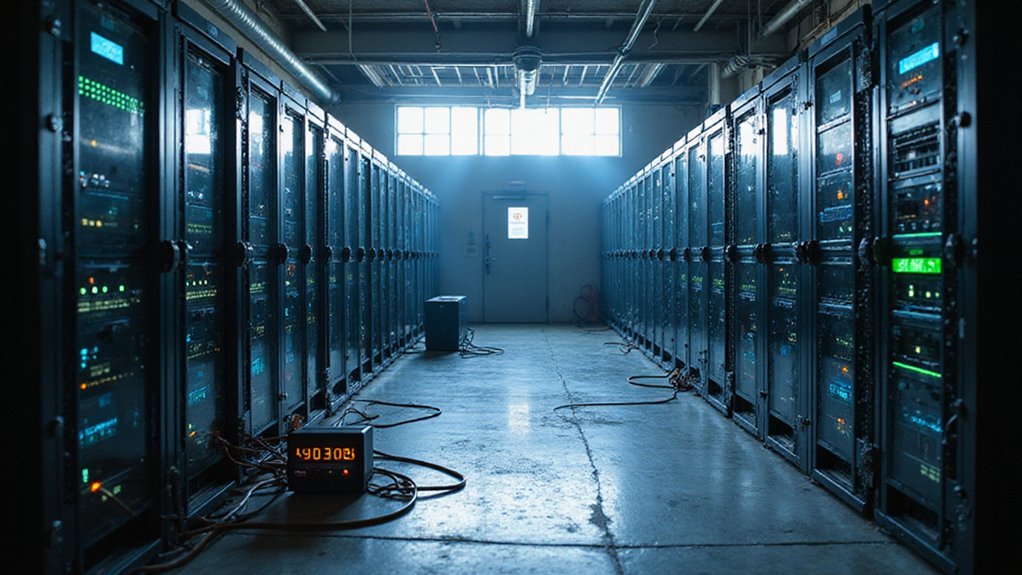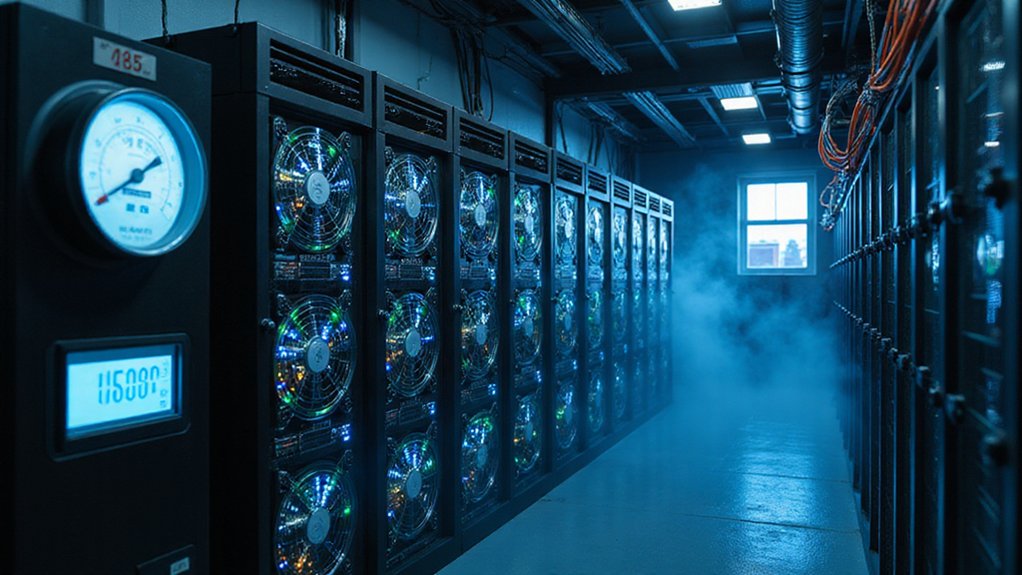Cryptocurrency mining profitability has plummeted from its egalitarian origins to a domain where industrial operations reign supreme. The 2024 halving event exacerbated this divide, squeezing margins for retail miners facing both reduced rewards and escalating hash rates. While specialized hardware like the Antminer S21 offers superior performance, home operators contend with prohibitive electricity costs that industrial miners simply don’t face. Alternative strategies—mining lesser-known altcoins, joining pools, or leveraging renewable energy—might still carve out viable niches in this increasingly inhospitable landscape.

How drastically the cryptocurrency mining landscape has shifted since Bitcoin’s early days, when enthusiasts could generate meaningful returns using standard home computers. The once-accessible domain of home miners has morphed into an industrial battlefield where economies of scale reign supreme, leaving solo operators to navigate increasingly treacherous financial waters.
The 2024 halving event—Bitcoin’s quadrennial supply-shock ritual—has further compressed profit margins by reducing block rewards, a development that disproportionately impacts smaller participants lacking industrial-grade efficiencies.
The contemporary mining calculus hinges on a precarious equilibrium of variables: cryptocurrency market prices (notoriously volatile), network hash rates (persistently climbing), electricity costs (the perennial nemesis of the retail miner), and regulatory headwinds (increasingly tempestuous). According to data spanning from 2015 to 2025, mining profitability is measured in USD per day for each terahash of computing power.
When these factors align unfavorably, even state-of-the-art ASIC hardware like the Antminer S21 can struggle to generate positive returns.
Modern mining operations increasingly rely on specialized hardware like the Bitmain Antminer S21 and MicroBT Whatsminer M50S, which offer superior computing power and energy efficiency compared to traditional GPU setups.
Industrial operations mitigate these challenges through preferential electricity rates—often below $0.05/kWh—while home miners typically contend with retail rates exceeding double that threshold. Most home miners will find themselves breaking even or losing money at electricity costs above $0.07-$0.08/kWh.
Alternative approaches may offer more viable pathways for the small-scale participant. Mining lesser-known altcoins frequently presents superior profitability due to reduced competition and more favorable reward structures. Cloud mining services and mining pools provide partial solutions by distributing both costs and rewards, though these arrangements introduce their own complexities and counterparty risks.
Renewable energy presents perhaps the most intriguing opportunity for home miners to carve out sustainable niches. Those with access to solar, wind, or hydroelectric power may achieve the holy grail of mining economics: near-zero marginal electricity costs.
Seasonal strategies—mining during periods of energy abundance and powering down during scarcity—represent another sophisticated approach to optimization.
The sobering reality remains that cryptocurrency mining has evolved from a hobbyist endeavor into a capital-intensive industrial enterprise. While not entirely inaccessible to smaller participants, profitable mining now demands either specialized circumstances (remarkably cheap electricity) or sophisticated strategies that leverage alternative cryptocurrencies, seasonal operations, or renewable energy sources.
Frequently Asked Questions
How Do Mining Pools Work Compared to Solo Mining?
Mining pools aggregate computational resources from multiple participants, distributing rewards proportionally to contributed hash power—minus fees—while offering predictable, albeit smaller, payouts.
Solo mining, conversely, represents cryptocurrency’s high-stakes lottery: miners deploy their hardware independently, shouldering substantial operational costs while awaiting the statistical improbability of solving a block (and claiming its entire reward).
For most participants lacking industrial-scale operations, pools represent the rational choice, sacrificing potential windfalls for sustainable economics.
What Environmental Impact Does Cryptocurrency Mining Have?
Cryptocurrency mining exacts a formidable environmental toll through massive energy consumption—largely derived from fossil fuels—generating substantial carbon emissions (85.89 Mt CO2 from Bitcoin alone during 2020-2021).
Beyond the carbon footprint, mining operations contribute to air pollution, exposing millions to harmful PM2.5 particulates, while simultaneously straining water resources through cooling systems and demanding extensive land use.
Mitigation efforts include carbon offsets, regulatory measures, and the somewhat obvious—though apparently not obvious enough—transition to renewable energy sources.
Are ASICS Better Investments Than GPUS for Beginners?
For beginners, GPUs typically represent more prudent investments than ASICs despite their lower efficiency.
The flexibility of GPUs (which can be repurposed for gaming or sold in secondary markets) provides an escape hatch should mining ventures prove unprofitable—a scenario not uncommon in this volatile sector.
ASICs, while superior in performance metrics, require substantial capital outlay and algorithm-specific commitment that rookies may find restrictive when traversing the labyrinthine learning curve of cryptocurrency mining economics.
How Does Cryptocurrency Taxation Work for Miners?
¹The tax implications alone might make one question whether the computational Olympics is worth the medal.
What Security Risks Do Miners Face?
Miners face a veritable gauntlet of security threats that would make even seasoned cybersecurity professionals wince.
Beyond the obvious cryptojacking and malware risks that pilfer computing resources, they contend with sophisticated phishing campaigns targeting wallet credentials, DNS hijacking schemes, and the ever-present threat of 51% attacks on smaller networks.
The financial stakes—sometimes representing millions in equipment investments—render these operations particularly attractive targets for threat actors seeking maximum return on their nefarious efforts.









